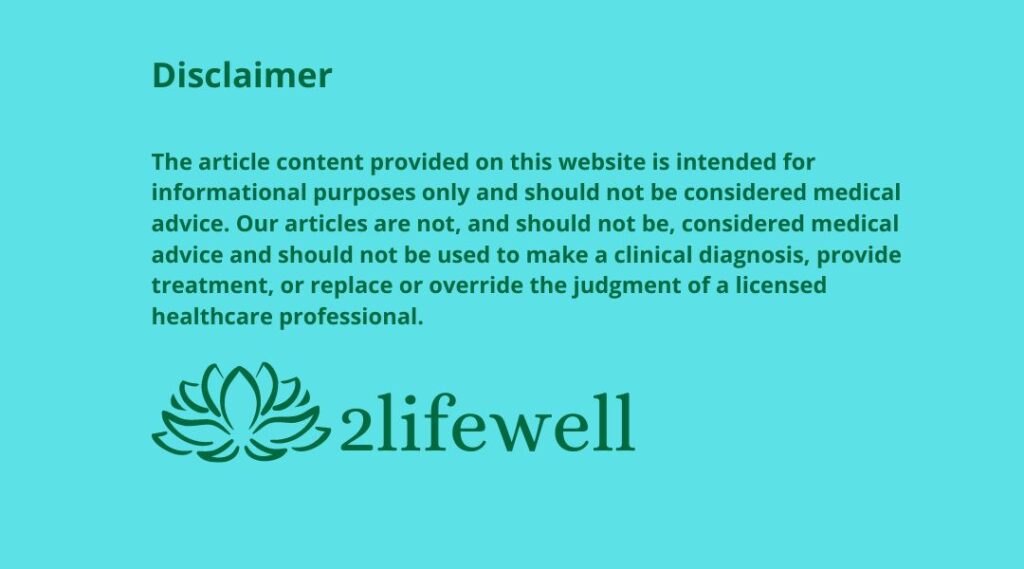
In today’s fast-paced world, it’s not uncommon to experience feelings of anxiety and overwhelm. From work deadlines to personal responsibilities, the demands of daily life can leave us feeling stressed and depleted. However, it’s important to recognize that anxiety is a natural response to stress, and it’s something that many people struggle with at some point in their lives. The good news is that there are strategies and techniques we can use to overcome anxiety and cultivate a sense of inner peace.
In this article, we’ll explore various strategies to help you manage and overcome anxiety, allowing you to experience greater peace, calm, and well-being in your life. From cognitive behavioral therapy to mindfulness practices, we’ll cover a range of approaches that can empower you to take control of your anxiety and live more fully in the present moment.
At the end of each section, you’ll find practical tips and suggestions to help you implement these strategies into your daily life. By incorporating these techniques into your routine, you can begin to break free from the grip of anxiety and embark on a journey towards greater inner peace and fulfillment.
Understanding Anxiety: Identifying the Root Causes
Anxiety can manifest in many different forms, from generalized anxiety disorder to panic attacks and phobias. It’s important to understand that anxiety is not just about feeling stressed or worried—it’s a complex and multifaceted condition that can have both physical and psychological effects on our well-being. By identifying the root causes of your anxiety, you can gain insight into your triggers and develop effective coping strategies to manage them.
TIP: Keep a journal to track your thoughts and emotions, and reflect on any patterns or triggers that may be contributing to your anxiety.
The Impact of Anxiety on Mental and Emotional Well-being
The effects of anxiety extend far beyond just feeling nervous or on edge. Chronic anxiety can take a toll on our mental and emotional well-being, leading to symptoms such as irritability, difficulty concentrating, and changes in sleep patterns. It can also contribute to more serious conditions such as depression and substance abuse if left untreated. By understanding the impact of anxiety on our mental and emotional health, we can take proactive steps to address it and prevent further complications.
TIP: Practice self-compassion and be gentle with yourself when experiencing symptoms of anxiety. Remember that it’s okay to ask for help and seek support from others.
Cognitive Behavioral Therapy: Rewiring Negative Thought Patterns
Cognitive Behavioral Therapy (CBT) is a widely recognized and effective treatment for anxiety disorders. It focuses on identifying and challenging negative thought patterns and beliefs that contribute to anxiety, helping individuals develop more adaptive ways of thinking and coping with stress. By learning to recognize and reframe negative thoughts, you can gain a greater sense of control over your anxiety and reduce its impact on your daily life.
TIP: Practice cognitive restructuring by challenging negative thoughts with evidence-based reasoning. Ask yourself if there is evidence to support your negative beliefs, and consider alternative interpretations of the situation.
Mindfulness and Meditation: Cultivating Calm in the Midst of Chaos
Mindfulness and meditation are powerful practices for managing anxiety and promoting inner peace. By bringing focused awareness to the present moment, mindfulness helps to quiet the mind and reduce feelings of stress and anxiety. Meditation techniques, such as deep breathing and body scan exercises, can further enhance relaxation and promote a sense of calm and well-being.
TIP: Start with short mindfulness practices, such as mindful breathing or body scan exercises, and gradually increase the duration as you become more comfortable with the practice.
Breathing Techniques: Harnessing the Power of the Breath to Reduce Anxiety

Deep breathing exercises are a simple yet effective way to reduce anxiety and promote relaxation. By focusing on slow, deep breaths, you can activate the body’s relaxation response and calm the nervous system. Incorporating breathing techniques into your daily routine can help you manage stress and anxiety more effectively, allowing you to experience greater peace and tranquility.
TIP: Practice diaphragmatic breathing by inhaling deeply through your nose, allowing your abdomen to expand fully, and exhaling slowly through your mouth. Repeat this process several times to promote relaxation and reduce anxiety.
The Role of Exercise in Managing Anxiety: Nurturing the Body-Mind Connection
Regular exercise is not only beneficial for physical health but also plays a crucial role in managing anxiety and promoting mental well-being. Physical activity helps to reduce levels of stress hormones in the body, increase the production of endorphins (feel-good chemicals), and improve mood and self-esteem. Incorporating exercise into your routine can help you cope with anxiety more effectively and enhance your overall quality of life.
TIP: Find activities that you enjoy and that fit your lifestyle, whether it’s walking, cycling, swimming, or yoga. Aim for at least 30 minutes of moderate-intensity exercise most days of the week.
Nutrition and Anxiety: Foods That Support Mental Health
Diet plays a significant role in mental health, and certain foods can either exacerbate or alleviate symptoms of anxiety. Consuming a balanced diet rich in whole foods, such as fruits, vegetables, lean proteins, and healthy fats, can provide essential nutrients that support brain function and reduce inflammation, which may contribute to anxiety. Avoiding or minimizing the intake of processed foods, caffeine, and alcohol can also help manage anxiety symptoms.
TIP: Experiment with incorporating mood-boosting foods into your diet, such as fatty fish rich in omega-3 fatty acids, whole grains, nuts, seeds, and leafy greens.
Seeking Support: The Importance of Therapy and Counseling
Seeking professional help is an essential step in managing anxiety and promoting mental well-being. Therapists and counselors are trained to provide support, guidance, and evidence-based treatments to help individuals overcome anxiety and develop coping strategies. Whether through individual therapy, group therapy, or support groups, seeking support from mental health professionals and peers can provide valuable insights and resources for managing anxiety.
TIP: Don’t hesitate to reach out for help if you’re struggling with anxiety. There are many resources available, including therapy, counseling, and support groups, to support you on your journey.
Journaling as a Therapeutic Tool: Processing Emotions and Gaining Clarity
Journaling can be a powerful tool for managing anxiety and gaining insight into your thoughts and emotions. By expressing your feelings on paper, you can process difficult emotions, gain clarity on challenging situations, and identify patterns or triggers that contribute to your anxiety. Regular journaling can also serve as a form of self-reflection and self-care, helping you navigate life’s ups and downs with greater resilience and self-awareness.
TIP: Set aside dedicated time each day to journal, whether it’s in the morning to set intentions for the day or in the evening to reflect on your experiences and emotions.
Setting Boundaries: Protecting Your Energy and Prioritizing Self-Care
Setting boundaries is essential for managing anxiety and preserving your mental and emotional well-being. Establishing clear boundaries with others helps protect your energy and prevent burnout, allowing you to prioritize self-care and maintain a healthy balance in your relationships and responsibilities. Whether it’s saying no to additional commitments, limiting exposure to stressful situations, or communicating your needs assertively, setting boundaries empowers you to prioritize your well-being and cultivate inner peace.
TIP: Practice assertive communication and assertively communicate your boundaries to others. Remember that it’s okay to prioritize your well-being and say no to things that drain your energy.
Creative Outlets: Expressing Emotions Through Art, Music, or Writing
Engaging in creative activities such as art, music, or writing can provide a powerful outlet for expressing emotions and relieving anxiety. Creative expression allows you to channel your thoughts and feelings into tangible forms, providing a sense of catharsis and release. Whether through painting, playing an instrument, or writing poetry, creative outlets offer a safe space to explore and process your emotions, fostering self-expression and emotional healing.
TIP: Explore different creative outlets and find activities that resonate with you. Experiment with various forms of artistic expression to discover what brings you joy and helps you express yourself.
Connecting with Nature: Finding Solace in the Great Outdoors

Spending time in nature has been shown to have numerous benefits for mental health, including reducing stress, anxiety, and depression. Nature provides a tranquil and rejuvenating environment that can help calm the mind and soothe the soul. Whether it’s taking a leisurely walk in the park, hiking through the woods, or simply sitting and admiring the beauty of a sunset, connecting with nature can offer a welcome respite from the demands of daily life and promote a sense of inner peace and well-being.
TIP: Make time to spend outdoors regularly, even if it’s just for a short walk or to sit in a nearby park. Notice the sights, sounds, and sensations of nature and allow yourself to fully immerse in the experience.
Building Resilience: Cultivating Strength in the Face of Adversity
Resilience is the ability to bounce back from challenges and setbacks with grace and determination. Cultivating resilience is essential for managing anxiety and navigating life’s ups and downs with resilience and grace. Building resilience involves developing coping skills, fostering positive relationships, and cultivating a growth mindset that embraces challenges as opportunities for growth and learning. By strengthening your resilience, you can face adversity with courage and resilience, knowing that you have the inner strength to overcome any obstacle.
TIP: Practice self-compassion and self-care, and remind yourself of your strengths and accomplishments when faced with challenges. Surround yourself with supportive people who uplift and encourage you, and seek out opportunities for personal growth and development.
Social Support Networks: Building Strong Relationships for Emotional Support
Social support plays a crucial role in managing anxiety and promoting mental well-being. Building strong relationships with friends, family, and community members provides a valuable source of emotional support, encouragement, and companionship. Having a supportive network of people who care about you and are there for you during difficult times can significantly reduce feelings of anxiety and loneliness and increase feelings of belonging and connection.
TIP: Nurture your relationships by staying connected with loved ones, reaching out for support when needed, and offering support to others in return. Prioritize spending quality time with friends and family, and cultivate new connections through shared interests and activities.
Time Management and Stress Reduction: Strategies for Balancing Responsibilities
Effective time management is essential for managing anxiety and reducing stress. By prioritizing tasks, setting realistic goals, and practicing time management techniques, you can create a sense of order and control in your life, reducing feelings of overwhelm and anxiety. Strategies such as creating to-do lists, breaking tasks into smaller, manageable steps, and setting boundaries around work and leisure time can help you stay organized and focused, allowing you to accomplish more with less stress.
TIP: Use time management tools and techniques such as the Pomodoro Technique, time blocking, or task batching to optimize your productivity and reduce procrastination. Remember to schedule regular breaks to rest and recharge throughout the day.
Overcoming Perfectionism: Embracing Imperfection and Letting Go of Control
Perfectionism is a common trait among individuals with anxiety and can contribute to feelings of stress, self-doubt, and inadequacy. Learning to embrace imperfection and let go of the need for control is essential for managing anxiety and promoting mental well-being. By reframing your mindset and embracing the idea that progress is more important than perfection, you can reduce feelings of pressure and anxiety and cultivate greater self-acceptance and resilience.
TIP: Challenge perfectionistic tendencies by setting realistic expectations for yourself, focusing on progress rather than perfection, and practicing self-compassion when things don’t go as planned. Remember that it’s okay to make mistakes and that failure is a natural part of the learning process.
Gratitude Practice: Shifting Focus from Fear to Appreciation
Practicing gratitude is a powerful antidote to anxiety and can help shift your focus from fear and worry to appreciation and abundance. By cultivating a daily gratitude practice, you can train your mind to notice and appreciate the positive aspects of your life, fostering feelings of joy, contentment, and inner peace. Whether through journaling, meditation, or simply taking a moment to reflect on the things you’re grateful for, incorporating gratitude into your daily routine can help reframe your perspective and promote emotional well-being.
TIP: Start a gratitude journal and write down three things you’re grateful for each day. Focus on both big and small blessings, such as the support of loved ones, moments of laughter, or the beauty of nature.
Visualization and Positive Affirmations: Harnessing the Power of the Mind to Cultivate Inner Peace
Visualization and positive affirmations are powerful tools for managing anxiety and promoting mental well-being. By visualizing calming scenes or affirming positive statements, you can train your mind to focus on thoughts and images that promote relaxation and inner peace. Whether through guided visualization exercises or repeating affirmations such as “I am calm and centered” or “I trust in myself and the universe,” incorporating these practices into your daily routine can help reprogram your subconscious mind and reduce feelings of anxiety and stress.
TIP: Practice visualization and positive affirmations regularly, especially during times of heightened stress or anxiety. Find a quiet, comfortable space where you can relax and focus your mind, and allow yourself to immerse fully in the experience.
Setting Realistic Expectations: Finding Balance Between Ambition and Self-Compassion
Setting realistic expectations for yourself is essential for managing anxiety and promoting mental well-being. While it’s important to set goals and strive for success, it’s equally important to be realistic about what you can accomplish and to practice self-compassion when things don’t go as planned. By setting achievable goals, breaking them down into manageable steps, and celebrating your progress along the way, you can reduce feelings of stress and anxiety and cultivate greater self-acceptance and resilience.
TIP: Practice setting SMART goals—specific, measurable, achievable, relevant, and time-bound—and break them down into smaller, actionable steps. Remember to be flexible and adjust your expectations as needed based on your circumstances and priorities.
Embracing Impermanence: Finding Peace in the Ebb and Flow of Life
Embracing the concept of impermanence can help reduce anxiety and promote inner peace. Recognizing that life is constantly changing and that difficult emotions and experiences are temporary can help you cultivate a sense of acceptance and resilience in the face of adversity. By embracing the ebb and flow of life with openness and curiosity, rather than resistance or fear, you can develop a greater sense of equanimity and tranquility, even amidst life’s uncertainties.
TIP: Practice mindfulness and meditation to cultivate present moment awareness and acceptance of impermanence. Remind yourself that difficult emotions and experiences are transient and that you have the strength and resilience to navigate life’s ups and downs with grace and courage.
Books:
- “The Anxiety and Phobia Workbook” – Edmund J. Bourne – https://amzn.to/3zb4FKc
- Bourne offers a variety of evidence-based techniques and strategies for overcoming anxiety and finding inner peace.
- “The Mindful Way Through Anxiety: Break Free from Chronic Worry and Reclaim Your Life” – Susan M. Orsillo and Lizabeth Roemer – https://amzn.to/4dUVWuQ
- Orsillo and Roemer combine mindfulness and cognitive behavioral therapy to offer a practical path to overcoming anxiety and cultivating inner peace.
- “Dare: The New Way to End Anxiety and Stop Panic Attacks” – Barry McDonagh – https://amzn.to/3Ts87XF
- McDonagh presents a simple, straightforward method for overcoming anxiety and finding emotional tranquility.
- “The Anxiety Toolkit: Strategies for Fine-Tuning Your Mind and Moving Past Your Stuck Points” – Alice Boyes – https://amzn.to/3TjUxFR
- Boyes offers a variety of tools and techniques for managing anxiety and achieving a sense of inner peace.
- “The Happiness Trap: How to Stop Struggling and Start Living” – Russ Harris – https://amzn.to/3Xda0sc
- Harris introduces Acceptance and Commitment Therapy (ACT) to help people deal with anxiety and find inner peace through acceptance and commitment to personal values.
Scientific articles:
- “Mindfulness-based stress reduction and health benefits: A meta-analysis” – Grossman, Niemann, Schmidt, & Walach (2004)
- This meta-analysis examines the benefits of Mindfulness-Based Stress Reduction (MBSR) for mental health, including reducing anxiety.
- “The Effect of Mindfulness-Based Therapy on Anxiety and Depression: A Meta-Analytic Review” – Hofmann, Sawyer, Witt, & Oh (2010)
- Meta-analysis investigating the effects of mindfulness-based therapy on anxiety and depression, demonstrating its effectiveness in treating these disorders.
- “Mindfulness and Emotion Regulation: Insights from Neurobiological, Psychological, and Clinical Studies” – Tang et al. (2015)
- This article reviews studies on the mechanisms by which mindfulness can help with emotional regulation, offering valuable insights for overcoming anxiety.
- “The Benefits of Being Present: Mindfulness and Its Role in Psychological Well-Being” – Brown & Ryan (2003)
- Article that explores the benefits of conscious presence (mindfulness) for psychological well-being, including reducing anxiety and stress.
- “Mindfulness-based interventions for anxiety and depression” – Kuyken et al. (2015)
- This study reviews the effectiveness of mindfulness-based interventions in treating anxiety and depression, offering insights into their therapeutic potential.
Book Chapters:
- “Handbook of Mindfulness: Theory, Research, and Practice” – Capítulo sobre mindfulness e ansiedade por Susan M. Orsillo e Lizabeth Roemer (2015) – https://amzn.to/4ecUjbm
- Offers a comprehensive overview of how practicing mindfulness can be effective in treating anxiety.
- “The Wiley Blackwell Handbook of Mindfulness” – Chapter on mindfulness and mental health by David J. A. Edwards (2014)- https://amzn.to/3ASFwUY
- Explores the mental health benefits of mindfulness, including reducing anxiety and increasing inner peace.
- “The Oxford Handbook of Anxiety and Related Disorders” – Chapter on mindfulness-based treatments for anxiety by Stefan G. Hofmann and Patricia M. M. Shadick (2009) – https://amzn.to/4cZ4TSA
- Discusses the effectiveness of mindfulness-based interventions in treating anxiety and offers clinical insights for overcoming this disorder.

